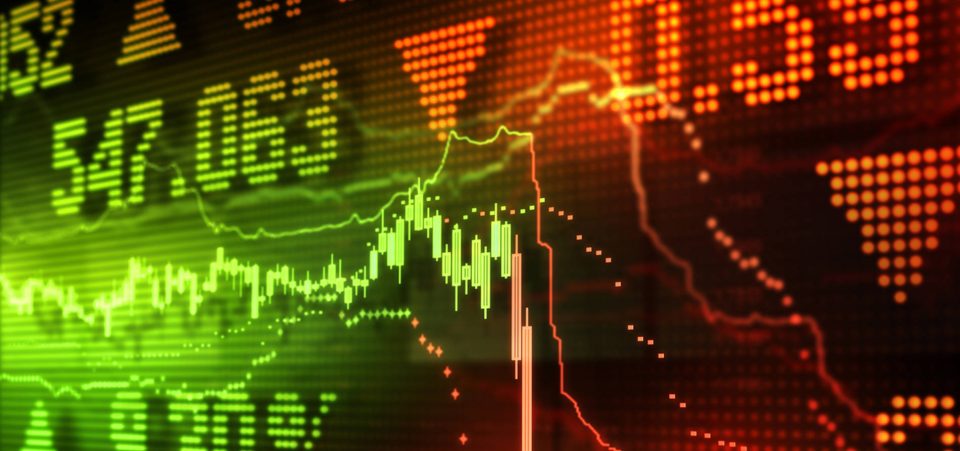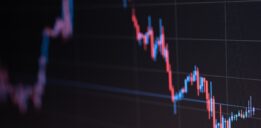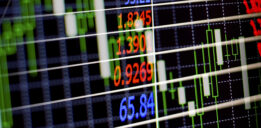Stock Market Crash Far Away from Investor Psyche
Optimism is once again wafting through the air, unaware of a future stock market crash gathering steam in the background. Dow 20,000 is back in play, after gold miners and energy stocks helped the Dow rally 112 points to 19,912.
After a recent decline that took the Dow Jones Industrial Average (DJIA) briefly below 19,700 (two-month lows), stocks have snapped back and the DJIA has now closed above the psychologically significant 20,000 number.
Over the past couple of weeks, optimism appeared to be waning for the Trump rally, with analysts questioning the details and fiscal viability of many Trump administration proposals. Peter Tchir, managing director at Brean Capital, LLC, encapsulated what many asset managers were thinking: “People are starting to realize, ‘Hey, this may not all come through… The Trump rally is fading and it feels like bank stocks got ahead of themselves.” (Source: “US financial stocks slide in 2017 as ‘Trump Trade’ begins to cool,” Financial Times, January 18, 2017.)
However, it appears optimism is again winning the day, perhaps owing to a couple of executive orders that could be perceived as favorable to the economy.
On Friday January 20, just hours after his inauguration, President Trump signed an executive order directing federal agencies to ease the “regulatory burdens” of Obamacare. Specifically, it orders to annul or delay regulations in Obamacare, which imposes a “fiscal burden on any State or a cost, fee, tax, penalty, or regulatory burden on individuals, families, healthcare providers, health insurers, patients, recipients of healthcare services, purchasers of health insurance, or makers of medical devices, products, or medications.” [Emphasis added.] (Source: “List of Trump’s executive orders,” Fox News, January 24, 2017.)
In essence, while Obamacare is not technically dead, it might as well be from an enforcement perspective. Considering there were 12.7 million enrollees paying an average of $408.00 per month in 2016, this could be a significant boon to the economy. This works out annually to $62.18 billion dollars of private money, which will not be siphoned into Obamacare health plans in 2017, potentially working its way into the economy.
Of course, it’s not that simple. There were associated tax credits depending on individual income, and some of this money will be going into other forms of insurance. But regardless, this is a net positive for consumer spending.
The Trump rally picked up steam again on January 25, with Trump’s executive order reviving the Keystone XL and Dakota pipeline projects. He also signed three related orders that would expedite the environmental permitting process for infrastructure projects related to the pipelines, direct the Commerce Department to streamline the manufacturing permitting process, and give the Commerce Department 180 days to maximize the use of U.S. steel in the pipeline (Source: Ibid.)
This executive order is an economic positive on two fronts: it puts thousands of well-paid workers to work, with stimulative effects on local economies, and it also cuts regulatory red tape to get related pipeline projects moving. Perhaps more significantly, its virtue signals to Big Industry that Trump is serious about diluting Environmental Protection Agency (EPA) regulations that delay and cancel lucrative projects.
In essence, Trump is following through on his campaign promises to big business, and this is a net positive to risk-on sentiment.
But while this news is certainly welcomed, is it masking much bigger elephants in the room?
Take the SKEW Index, for example. This is a Chicago Board Options Exchange (CBOE) index derived from the price of S&P 500 tail risk. Similar to VIX, the price of S&P 500 tail risk is calculated from the prices of S&P 500 out-of-the-money options. SKEW typically ranges from 100 to 150. As SKEW rises above 100, the left tail of the S&P 500 distribution acquires more weight, and the probabilities of outlier returns become more significant. (Source: “CBOE SKEW Index (SKEW),” CBOE, last accessed January 25, 2017.)
In layman’s terms, the higher the SKEW index, the bigger the demand for low strike puts (bearish bets), corresponding to a steepening of the curve of implied volatility. At present, the SKEW index is at its third-highest level in its 27-year history (146.33 on January 23), only eclipsed by the Federal Reserve’s important interest decision in December 2015 and the Brexit fiasco in June 2016. Both times, a stock market crash occurred, but regained its footing in short order.
Is the third time the charm, from a bearish perspective?
Also, as my colleague John Whitefoot pointed out in a recent article, a key valuation metric known as the Cyclically Adjusted Price-to-Earnings (CAPE) ratio points to the S&P being overvalued by 75%. The 10-year average is around 16. On January 19, 2017, it was at 28.06.
There are dozens of other indicators flashing overbought/overvalued presently, however, I don’t like to dwell too much on these. The old axiom, “The market can remain irrational longer than you can remain solvent,” has never been truer than it is today, in the era of unending stimulus and central bank coordination. The market has steamrolled anyone calling tops in recent memory, relegating contrarian and value managers to the morgue. But this doesn’t mean a stock market crash isn’t coming.
So, where does the market go once the afterglow of the Trump executive orders dies down?
I would posit we’re currently in a “grace” period right now, where Trump rollbacks of red tape, environmental regulations, and pro-business platitudes are giving markets feelings of grandeur. Similar to the dotcom tech bubble in 2001, where the internet was going to change the world and deliver rising profits ad infinitum, the market must feel Trump will transform America back to the salad days of six percent annual growth. A stock market crash couldn’t be farther from people’s reflections.
There’s only one problem: it’s not going to happen.
As Newton’s Third Law of Motion states, “For every action, there is an equal and opposite reaction.” Should Trump deliver on his promises to reverse the cycle of globalization, do not expect its benefactors to remain sleeping like overfed dogs. Beyond the optimism of an economic rebirth lie the consequences of nations who will hit America back just as hard. The news cycle hasn’t swung around to that perspective yet, but it will.
In the end, I’m not saying to expect a stock market crash market now that Dow 20,000 is upon us. In fact, a daily close above 20,000 could send the Dow much higher on a near-term basis, as many sellers have presumably been absorbed. But I encourage readers to pay extra attention to the thesis in which they invest, and ask whether the blinding optimism of a Goldilocks economy is truly at hand.






